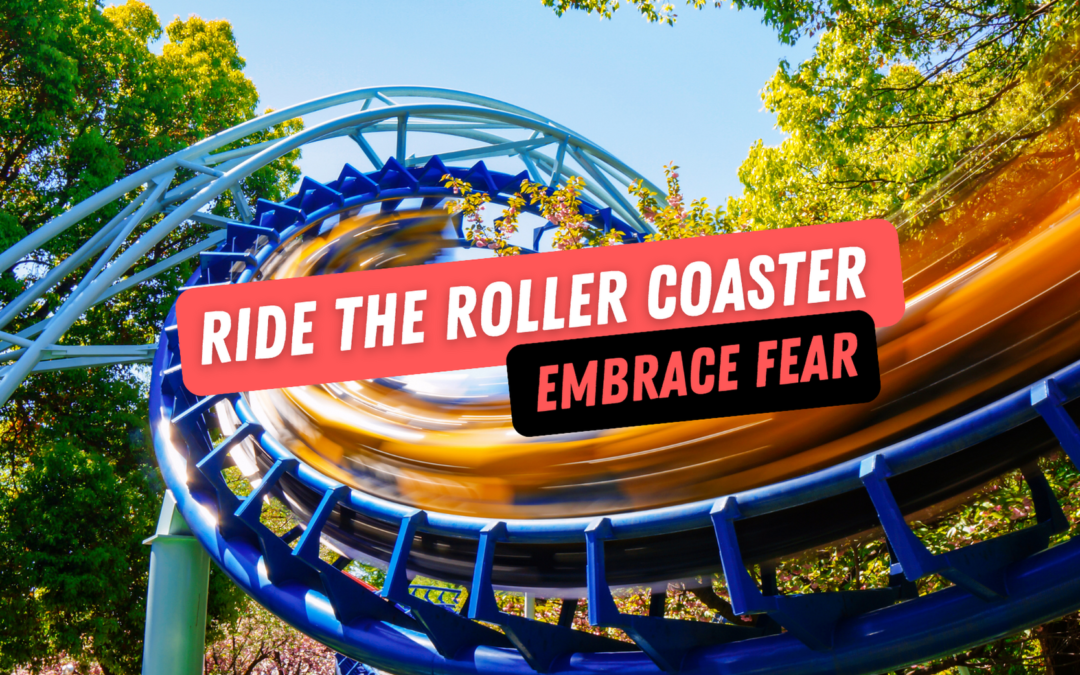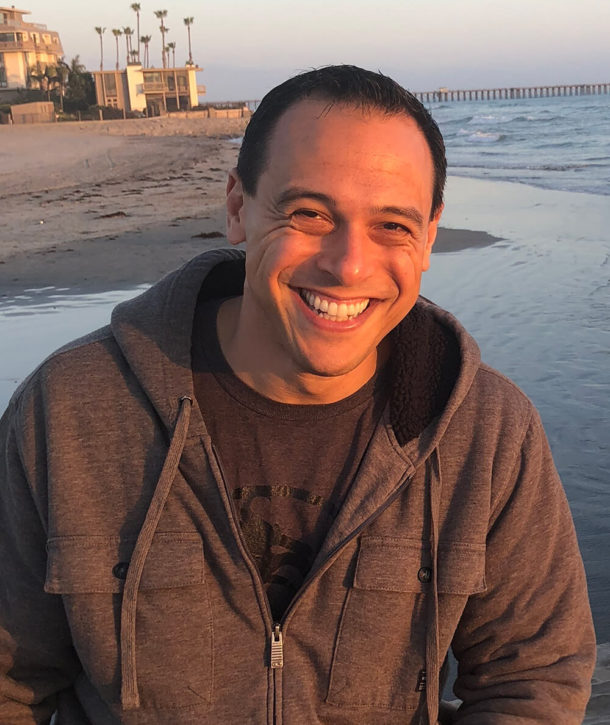When I was twelve, my summer camp took us on a field trip to Hershey Park, home to one of the world’s largest wooden roller coasters. Everyone around me seemed excited to get in line for the big ride—everyone except me.
I had never been on a roller coaster before, and the sheer size and speed of the thing terrified me. I wanted to be anywhere but on that ride, but at the same time, I didn’t want to look like a coward. So, faced with my certain doom, I stayed in line.
As we inched forward, my eyes darted from person to person, desperate to witness the fear I felt on the faces of my friends. If they were scared, then it would feel okay for me to be scared too.
As far as I could tell, everyone else was cool, calm, and collected. So, I did what any kid would do in that situation—I pathetically attempted to play it cool. I forced laughter and jokes and hoped no one saw the beads of sweat dripping from my brow.
With each agonizing moment, we inched our way toward the front of the line. My hands gripped the railing before stepping onto the rickety wooden platform. The boards creaked ominously under my weight with each step. Did no one else hear this? Why was no one else freaking out?
Every fiber in my being screamed at me to run away before it was too late… but I stayed. I let the attendant direct me to my seat and strap me in next to a blond girl about my age whose wide darting eyes betrayed as much terror as I felt.
“Hi,” I croaked, telling her, “We should at least know each other’s names before we plummet to our deaths.” She smiled. Then we heard the crack of the attendant’s lever, and the car jolted forward. Her smile disappeared just as quickly as it had emerged.
I saw her eyes water and her hands tremble. Something in my brain switched at that moment, like a circuit breaker cutting off an electric current. Suddenly, I wasn’t focused on my fear, I was only focused on hers. As she looked for an escape route, I just started talking. I don’t remember what my twelve-year-old brain was able to come up with, but I managed to get her attention and keep it for most of that ride up. I could see her shoulders relax a bit.
It wasn’t until we crested the top of that rollercoaster that my attention finally turned back to my own forgotten terror. I yelled something like, “What the hell are we doing up here?” Then my stomach dropped out, and we careened down the track as we both screamed…
And I was still alive. Even more unbelievably, I was having fun.
My fear of rollercoasters had been transformed into exhilaration. The excitement of that first drop turned my scream of terror into one of pure joy. I had forgotten to be afraid for long enough that I was finally able to just enjoy the ride. At twelve years old, I had won my first battle against fear.
Fear wears many faces. It’s the lingering dread of failure that shadows us when we leave our comfort zone. It’s the jitters that dance in our stomach when we imagine making a fool of ourselves. It’s the nagging voice in the back of our head, whispering disparagement about wasting our lives chasing after our dreams.
Such fears are universal. They crop up in the lives of everyone who aspires to grow, improve, or reach for something more.
Fear never goes away. We can, however, learn to approach fear differently. We can change how we perceive it, how we react to it, and ultimately, how we coexist with it. It doesn’t have to be the insurmountable wall standing between us and our dreams — it can be a stepping stone, a learning experience that propels us forward. Fear isn’t the end of the journey; it’s a crucial part of the adventure.
Rollercoasters are a great parallel for the kind of fear we face when embarking on something new. There is very little real danger, but what we perceive to be there feels real.
Our physiology treats a rollercoaster (or giving a new presentation or showing off a new project) as a threat to our safety, and if we can learn to recognize and dance with that emotion, we can overcome it.
I learned a few things that day about how to conquer fear.
1. Recognize that most fears in modern society are illusory: there is nothing to fear but fear itself.
The roller coaster ride “felt” scary, but in reality, it was safe. In modern society, 99% of fears are just as illusory. I was terrified when I quit law school to become a game designer. I worried endlessly when I quit my game design job to start my own company. But my fears were just stories I told myself. I always could have gone back to doing what I was doing before. Recognizing your fears as mere illusions can help you push past even the toughest forms of resistance.
2. The physiological sensations of fear are almost identical to that of excitement: transform your frame to transform your experience.
Most people believe that their thoughts create their emotions: I think something is scary, then I feel the fear. This is backwards. Our physiological response to a situation happens first (sweaty palms, increased heart rate, etc.), and then our minds interpret that data to create an emotion, which we then tell a story about.
In the case of a roller coaster, the reason that it is fun for most people is that the physiological response to fear and excitement is the same. Think back to your own experiences watching scary movies or playing a suspenseful videogame. The fear you feel quickly transforms into enjoyment in the right context. The only difference is how we choose to interpret the situation.
Once our brain realizes that we are actually safe and not in danger, we see the increased heart rate and energized state as one of enthusiasm and joy, rather than terror and fear. Use this power to your advantage. The fear you feel around joining that new class, starting your creative project, or pursuing your dream job is also excitement. Push past your old story and tell a new one.
3. Use social pressure to your advantage
If I had been alone in that roller coaster line, I would have never made it. My fear of embarrassment outweighed my fear of the ride. We are social creatures and we can use this to our advantage. Join a group of peers who are working toward the same goal (e.g., join a writing group) or put pressure on yourself by publicly declaring your target (e.g., schedule a public playtest of your new game). If you want to join me and countless others on this journey together, join our community at TK.com
4. Focus on helping others: connect to a purpose bigger than yourself
Once I was on the ride, thanks to the scared girl next to me, my focus shifted from myself to someone else. Working on creative projects is hard, but when you think about the joy and connection you can bring to others, it gets easier. If you have children or others who look up to you, it can be helpful to focus on the example you want to set for them. The behavior you model will affect everyone around you. Living a fulfilling creative life is not just something you do for you; it’s something you do to help inspire everyone you care about.
5. Use the previous times you’ve overcome something as fuel to overcome future fears.
In our personal epic game of life, it’s easy to become stuck when faced with fear. And like the roller coaster that seems terrifying, these fears often stem from our own perceptions rather than actual danger. It’s like being in line for that massive, twisty roller coaster – the one that looks incredibly scary but, in reality, is carefully engineered for safety.
Our fears feel overwhelming and intense, just like that first drop of a roller coaster. But the truth is, they’re often just the products of our imagination. Once we understand this, we can start to navigate them with more confidence and clarity.



